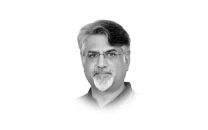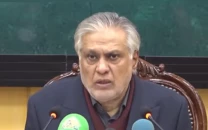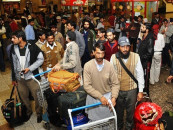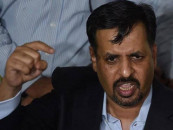Lying to win
The disinformation is expressed by competing parties in opposite directions

Robert Pape, in his Dying to Win, asserts that suicide terrorism is a strategic tool used by weak groups to achieve political goals, especially to compel democratic states to withdraw military forces from territory they view as their homeland. Nowadays both insurgents and states, in their fight against each other, have been using well thought-out lies as a strategic tool to pacify their supporters, cohorts and public at large.
Be it regular or irregular warfare, lying has become a strategic tool both in the hands of states or insurgents. It has, with time, become more important than carrying out a suicide attack or a vehicle borne improvised explosive assault against military or paramilitary forces.
The way a series of lies are used in a structured fashion can actually tailspin an incident which enhances prospects of a state or an insurgent group in an ongoing fight against each other. In it, three levels can be conceived namely disinformation, deception and dispersion which may be used profusely during a conflict.
Deception has overlapping areas with disinformation whereas dispersion is a subset of deception. All dispersive activities are part of deception but not vice versa. Similarly, all deception exercises are disinformation practices but not the other way round. It means we have three concentric circles with dispersion lies at the centre enveloped by deception and disinformation spheres respectively.
The disinformation is both related to imaginary and real things. The dispersion is a practical situation in which multiple models of actions are present on ground and all of them are real. The adversary can guess the most probable way of action but it is difficult to see with certainty as to which course the enemy may undertake in the end.
A state may gain ground through minimising the causalities of its forces while maintaining their morale and public pacification at a higher level. A state never wants to lose its monopoly of control over violence and almost always shows alacrity of its retaliation in case it gets attacked heavily by an enemy state or an insurgent group. Normally, a large loss is compensated by highlighting same losses by the insurgent group or an enemy state through disinformation.
On the other hand, the insurgents try to maximise the damage in order to instill fear in hearts and minds of the public. They want to magnify an insignificant attack in terms of material damage and human loss. They also secure their recruitment base among the population by maintaining a cascade of deceptive actions on different social media platforms.
The disinformation is expressed by competing parties in opposite directions. One tries to belittle the claims of the other. Though insurgents and states compete with each other, the real test pivots around who gets its narrative through to convince the population. In some situations, the insurgents can cause a friction between two countries through an incident leading to animosity and possible tension between them.
Al Qaeda in Indian Subcontinent has the wherewithal to produce such a result so that they can divert the attention of the adversaries from the issue of terrorism while strengthening their bond with the local militants. This way it can deepen the suspicion and mistrust of one country against the other.
The recent conflict between Iran and Israel which also dragged the US in it has used disinformation, deception and dispersion activities. The US has used a kind of directed disinformation action which was complemented by wait-and-see mechanism. Israel has employed all three with alacrity — dispersion, deception and disinformation exercises.
It has minimised the infrastructural losses on its mainland while using the same to provoke a US attack on the soil of Iran. The latter has used deception at a moderate level especially with missile launchers in urban centres along with controlled dispersion through reliable channels for its retaliatory measures.
The future conflicts therefore are going to involve a high percentage of dispersion and deception exercises to subdue each other.
















COMMENTS
Comments are moderated and generally will be posted if they are on-topic and not abusive.
For more information, please see our Comments FAQ